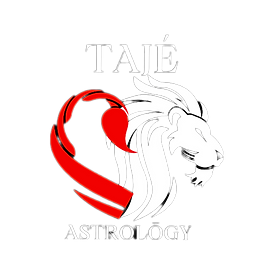Biblical Astrology | For Signs & Seasons | Part I
- Taje Astrology

- Dec 1, 2024
- 3 min read

Ecclesiastes 3:1
"To everything there is a season, and a time to every purpose under the heaven."
The connection between astrology and biblical narratives is a fascinating topic, rich with symbolism and subtle references that intertwine celestial events with spiritual themes.
Here’s a breakdown of how the ages of the zodiac (often tied to the concept of the precession of the equinoxes) might align with biblical stories:
1. The Age of Taurus (c. 4300–2150 BCE)
Symbol: The Bull.
Biblical Connection: The worship of the golden calf during the Exodus (Exodus 32:4-6) may symbolize the transition from the Age of Taurus to the Age of Aries.
Taurus Influence: Bulls were sacred in many ancient cultures during this time (e.g., the Apis Bull in Egypt), and the veneration of the calf might reflect lingering Taurus-era practices.
Biblical Conflict: Moses’ destruction of the golden calf could represent a symbolic rejection of the old age and ushering in a new spiritual paradigm.
2. The Age of Aries (c. 2150–1 BCE)
Symbol: The Ram.
Biblical Connection: This age is characterized by the prominence of rams and lambs in religious sacrifices.
Rams in Rituals: The ram appears in the story of Abraham, where God provides a ram as a substitute for Isaac (Genesis 22:13). This could symbolize the dominance of Aries themes.
The Shofar: The blowing of the ram's horn (shofar) in Jewish tradition connects to the Aries archetype.
Cultural Shifts: This era saw a focus on law (e.g., the Mosaic Law) and leadership, aligning with Aries' assertive and pioneering qualities.
3. The Age of Pisces (c. 1 BCE–Present)
Symbol: The Fish.
Biblical Connection: The time of Jesus corresponds to the Age of Pisces, and many symbols associated with Jesus and Christianity align with Piscean themes.
Fish Symbolism: Jesus called his disciples "fishers of men" (Matthew 4:19), and the ichthys (fish symbol) became an early Christian emblem.
Piscean Qualities: Pisces represents compassion, sacrifice, and spirituality, resonating with Jesus' teachings on love, forgiveness, and salvation.
Miracles Involving Fish: Jesus multiplied fish to feed the masses (Matthew 14:13-21) and performed miracles involving water, a key element of Pisces.
Baptism: The emphasis on water in Christian rites reflects Piscean influence.
Matthew 28:20
"...And lo, I am with you always, even to the end of the age."
The term "age" (Greek: aion) refers to a specific period in time. Some interpret this as Jesus referencing the end of the Piscean Age, which aligns with his era.
4. The Transition to the Age of Aquarius (c. Present–2400 CE)
Symbol: The Water Bearer.
Biblical Prophecy?: Some interpret the Age of Aquarius as hinted at in the New Testament.
"Man with the Water Jar": In Luke 22:10, Jesus tells his disciples to follow a man carrying a jar of water. This has been interpreted as a symbolic reference to the coming Aquarian Age.
Aquarian Themes: Associated with knowledge, technology, and humanitarianism, this age might align with prophecies about greater enlightenment and unity.
Genesis 1:14
"And God said, 'Let there be lights in the expanse of the heavens to separate the day from the night. And let them serve as signs to mark sacred times, and days, and years.'"
This suggests that the celestial bodies (sun, moon, stars) serve as markers of divine time, hinting at cosmic cycles.
The Precession of the Equinoxes
The concept of precession—a slow, 26,000-year cycle where the Earth's axis shifts through the zodiac signs—is the backbone of linking ages to biblical eras.
Significance in Ancient Thought: Many ancient cultures tracked these celestial movements and integrated them into their spiritual frameworks. The Bible, while not explicitly astrological, often uses celestial imagery (e.g., the Star of Bethlehem) to signify divine events.
Unspoken Connections and Interpretations
Heavenly Bodies as Signs:
Genesis 1:14 states that celestial bodies serve as “signs and seasons,” which some interpret as a nod to astrological timing.
The Magi, astrologers who followed the star to Jesus’ birthplace, affirm the role of celestial observation in biblical narratives.
Twelve Tribes and Zodiac Signs:
The twelve tribes of Israel and the twelve apostles have been linked to the twelve zodiac signs, reflecting cosmic symmetry in scripture.
Astrology and Divine Will:
While direct astrology is often condemned in the Bible (e.g., Isaiah 47:13), its underlying principles may be woven subtly into the text as part of God's divine order.
The Bigger Picture
These correspondences suggest that ancient writers have encoded the transitions of cosmic ages into their spiritual and moral teachings. The Bible reflects humanity's interaction with celestial patterns, blending them with theological and cultural contexts. Whether seen as direct references or symbolic parallels, these links deepen the mystical dimensions of the scriptures.






Comments